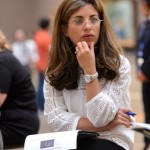
Kristen Amundson
Charlie Brown, the Football, and the ESEA
Posted by Sep 16, 2015

Kristen Amundson
Perhaps I never should have agreed to take part in this blog roundup on the reauthorization of the Elementary and Secondary Education Act (ESEA). The reason is simple: I don’t believe ESEA will be reauthorized this year.
I have been the Odd One Out in a host of optimistic conversations all year. Most of my colleagues believe that this time, for sure, the 50-year-old ESEA (last updated in 2001) will actually be reauthorized.
I remain unconvinced. Remember Lucy and the football? I ask them. Every year, Charlie Brown convinced himself that this time Lucy would hold that football and let him kick it. And every year he was disappointed. Those who believe the federal government will give them legislative relief from onerous aspects of No Child Left Behind (NCLB) this year are, I fear, setting themselves up for the same letdown.
Read More












